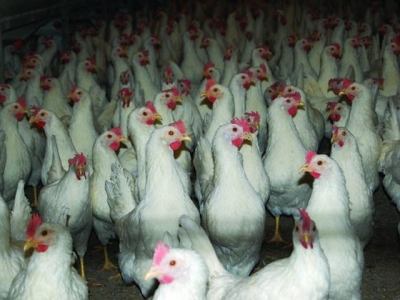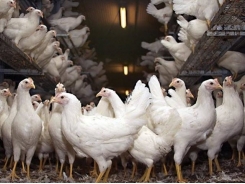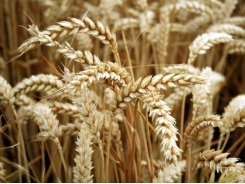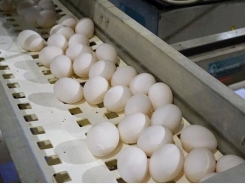Raising hens with intact beaks to produce cage-free eggs

Egg producers serving the German market have kept the beaks of their hens intact to meet the beak trimming ban that went into effect for pullets placed after January 1, 2017. | Terrence O'Keefe
A Dutch egg producer with 25 years of cage-free experience has successfully transitioned to cage-free egg production from hens with intact beaks.
The practice of trimming the beaks of laying hens, broiler and turkey breeders, and turkey meat birds goes back decades. Beak trimming was instituted as a management tool to prevent injury resulting from aggressive pecking and feather pecking. In spite of advancements such as infrared beak treatment, animal welfare activists have continued to push for an end to beak trimming.
Germany’s ban on beak trimming
The German ban on placing beak-trimmed pullets went into effect January 1, 2017. Johan Bouwhuis’ farm, Bouwhuis Agro, houses 73,000 laying hens, all of which are cage free with beaks intact. Bouwhuis has had hens for 25 years and has always housed his birds cage free. This farm is considered a relatively large layer operation in the Netherlands.
Today, the farm houses 46,000 layers in “barn systems,” houses with cage-free aviaries. The other 27,000 hens are “free range.” In this market, free-range rearing means the hens have a house with cage-free aviaries or floor and nest system and have outdoor access to a “winter garden” and to pasture land with shade trees. The winter garden has a roof and wire screening for walls, but it is not climate controlled. It is similar to the “porches” used in the U.S. by some organic egg producers. Access to the pasture area is through doors in the winter garden.

Aviaries offer more places than floor and nest systems for lower-ranking hens to move away from more dominant flock mates. | Terrence O'Keefe
Hens not beak trimmed
Egg Industry visited Bouwhuis Agro in early November 2016. At that time, all the hens on the farm were DeKalb White and they were not beak-trimmed. Bouwhuis said all the farm’s eggs are sold to a customer in Germany unwashed and ungraded. About 70 percent of the eggs produced in the Netherlands are sold in Germany. Table eggs in Europe are not washed or refrigerated.
Bouwhuis said they have implemented some management changes along with the elimination of beak trimming, but that the change has gone smoothly. He said that when a flock is first introduced from the pullet farm to the layer house, they use a product called PICKStein (peck stone) which is a mineral block containing calcium, magnesium, sodium and trace minerals at which the hens can peck.
As the mineral block wears down, so might the sharp point of the hens’ beaks. He said that once the mineral blocks are worn down, they place some concrete blocks in the scratch areas of the houses for the hens to peck. By the end of the lay cycle, the concrete blocks have been pulverized by the hens. Alfalfa bales are also placed in a holder that rotates as the birds peck at and eat the alfalfa. The idea is to keep the hens occupied exploring and pecking something other than their flock mates.

Alfalfa bales can be placed in a holder to give hens a distraction for pecking. It also rotates to make it harder for hens to camp out on top of it and quickly devour the bale. | Terrence O'Keefe
Aviary better than floor systems
When Bouwhuis built his first layer house, a floor and nest system was installed. Later, Jansen aviary systems were installed and aviaries are in all of the houses now. Bouwhuis said the birds perform better in the aviaries.
The aviaries have three levels, with feed provided on the first and third levels, and nests and water on the second level. The aisles between the aviaries are almost 8 feet wide (2.4 meters), which provides plenty of scratch area for the hens. Ample scratch area and lots of perch space are thought to contribute to reduced bird-to-bird pecking.

Hens peck about 15,000 times per day and, with ready access to feed, many of those pecks will be at something other than the feeder. | Terrence O'Keefe
The housing system used to raise the pullets must be matched to how the hens will be housed in the layer house. The pullets need to learn how to jump and fly in the pullet house, otherwise they will tend to stay on the floor in the layer house and excessive floor eggs will result. The pullets raised for Bouwhuis Agro are reared in Jansen Nivo Varia systems.
Good free-range performance
Bouwhuis is raising just its second free-range flock, and on Egg Industry's recent visit the hens were 30 weeks old. The first free-range flock outperformed the breed standard from week 24 through week 88 in terms of rate of lay. Production peaked at 98.3 percent in week 29 and remained at more than 90 percent through week 74.
When asked about free-range rearing for hens, Bouwhuis said, “It is a nice sight to see the birds outside, but it isn’t better for the bird.” He said the free-range flocks have 2 to 3 percent more mortality than cage-free flocks. Bouwhuis receives EUR0.025 (US$0.027) more for free-range eggs than for cage free, so while more challenging from a management standpoint and less safe for the hens, so far, it has been more profitable.
Bouwhuis offered one tip for caring for free-range hens: He said it is best if the birds are a little heavier coming from the pullet grower because it takes a little time for the bird to get acclimated to going outside. He said some birds will go out every day, but that more will go out in cloudy weather. The big concern for outdoor access, besides potential exposure to wild birds carrying disease, is predators like foxes and birds of prey. Predators can cause the hens to panic and pile up, which can kill more birds than the predators themselves.
Related news
Tools

Phối trộn thức ăn chăn nuôi

Pha dung dịch thủy canh

Định mức cho tôm ăn

Phối trộn phân bón NPK

Xác định tỷ lệ tôm sống

Chuyển đổi đơn vị phân bón

Xác định công suất sục khí

Chuyển đổi đơn vị tôm

Tính diện tích nhà kính

Tính thể tích ao




 Fish meal in poultry diets: to use, or…
Fish meal in poultry diets: to use, or…  EU layer breeders adapting hens for cage free…
EU layer breeders adapting hens for cage free…